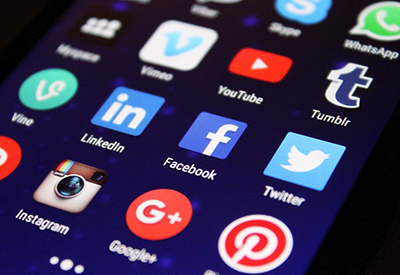5 Social Media “Facts” You Should Ignore

Mar 18, 2017
Trying to learn how to manage your business’ social media can be a difficult task. The web is filled with outdated social media facts. In some cases, information and advice are outright incorrect.
With non-stop changes to Facebook (and other platforms’) algorithms, it is hard to know what social media advice is good and what you should avoid.
Here are five social media “facts” I regularly see, but you should ignore.
1. The best time to post or tweet is…
It is perfectly understandable why someone would want to know this. Posting at the right time can tremendously impact your reach and the return on your efforts.
The problem is most social media articles tackle this with a one size fits all approach. They say “12 noon” or “5:00 pm on Wednesdays” is the best posting time on this or that platform. However,
• it does not take into consideration that your customers may be in multiple time zones
• there’s no guarantee that your audience matches the “average” audience they studied
• each industry has a completely different time that works for them
• the best time to post regularly changes depending on the day, week and month
Rather than accepting this advice as facts and using a generic time, look at your own audience’s patterns.
Log in and take a look at your page’s Facebook Insights. Review optimal posting times based on your audience as recommended by Hootsuite or Buffer. These tools are far more likely to help you select the best time to post/tweet for your audience.
2. Make sure you are active on Facebook, Twitter, Instagram, Pinterest, LinkedIn, Snapchat and Google +
Yes, grab your “Digital Real-estate” across each of the big social media platforms. But beyond reserving your brand name, the actual return on investment drops significantly if you are too spread out. Most businesses can limit themselves to 2-3 social media platforms and still cover a majority of their target audience.
Additionally, to properly manage more than two social media accounts often requires either hiring a team of social media managers or outsourcing to a larger agency. Far too expensive if you are a small business owner.
Pick the platforms where your audience is most active. Focus on those. Go after quality followers and sustainable growth. Your return on investment will be greater and you won’t find yourself pulling out as much hair.
3. If you don’t have time to post, hire interns and automatically publish the same posts across all platforms
Let me respond by asking two questions.
1. If CNN, FOX, ABC, NBC and CBS News all called you for an interview, would you let an intern speak for your business?
Most likely not. You would want to make sure just the right message was delivered.
When something is posted on social media, it has the potential to reach an even larger audience (including CNN, FOX, ABC, NBC and CBS reporters). If you personally don’t have the bandwidth to manage social media, hire a professional.
2. Is Nike’s marketing exactly the same in London as it is in New York? Hint: just because “Just do it” is their global slogan is no reason to say “Yes”.
Listen carefully and you will quickly see differences in messaging. Accents, changes in sentence structure, and even the spelling of common words such “colour” (instead of “color”) are customized to fit the differences between the two audiences. The same can be said about posting on Twitter vs. Facebook or LinkedIn. If you simply copy the same message across all platforms, people will notice and your campaign will not be as effective. Tailor your content to each platform’s audience.
4. Facebook is dead
You may have heard that Facebook is no longer worth the effort. Always look at other platforms before solely committing to Facebook, but don’t completely rule it out either.
Facebook still has the largest audience out there and is a powerful platform for establishing your personal brand. Learn how to maximize your reach with Facebook, or hire someone who will do it for you. Even with its changing algorithms, you can learn simple Facebook strategies to maximize your reach.
Be realistic about the cost and know where your target audience really is. It may not be on Facebook after all.
5. Don’t worry about how large your audience is
Ok, I wish I could say that advice was 100% correct. Sadly, I cannot.
Seth Godin is an amazing thought leader and his writing is short and insightful. But I am willing to bet most people would still be impressed even if they hadn’t read a single one of his blogs. Why? Seth Godin has over half a million followers and only follows one person.
I am not telling you to go out and buy half a million followers. Please, never buy followers.
What I am saying is avoid being too picky. Your account is not an exclusive club, it is your place of business. Being too picky can actually stop you from attracting the key people and businesses you really want to reach.
When you grow your audience, pay attention to quality, growth rate and yes size. That will earn you “social proof.” This coveted social proof can translate into other perks, such as getting media coverage of your business.
Conclusion
There is a lot of information out there concerning how to manage your social media marketing. If it sounds too good to be true, too easy to actually work, or just doesn’t make sense, ignore it or ask for some help from someone you trust.
This article was first published as a blog by CapitalTristate, an electrical distributor in the U.S. Mid Atlantic.




![Guide to the Canadian Electrical Code, Part 1[i] – A Road Map: Section 52 — Diagnostic imaging installations](https://electricalindustry.ca/wp-content/uploads/2022/11/Guide-CE-Code-2-768x432.png)





![Guide to the Canadian Electrical Code, Part 1[i] – A Road Map: Section 52 — Diagnostic imaging installations](https://electricalindustry.ca/wp-content/uploads/2022/11/Guide-CE-Code-2.png)






